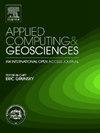Landslide detection using deep learning on remotely sensed images
IF 3.2
Q2 COMPUTER SCIENCE, INTERDISCIPLINARY APPLICATIONS
引用次数: 0
Abstract
Natural hazards such as landslides pose significant geological threats that can severely endanger the safety and property of residents in affected areas. Therefore, the prompt detection and accurate localisation of landslides are crucial. With the advancement of remote sensing technology and computational methods, artificial intelligence (AI)-based landslide detection techniques have emerged as effective solutions. Compared to traditional methods, these AI-driven approaches offer enhanced efficiency, accuracy and reliability, improving the speed and precision of landslide detection. They also provide valuable data for disaster prevention, mitigation and the assessment of landslide susceptibility and hazard levels. This study focuses on the western Sichuan region and constructs a historical landslide dataset using Google Earth imagery, which includes 4280 landslide samples (3424 for training and 856 for validation). To augment the dataset, 11 data augmentation techniques were applied, including copy–paste, random horizontal flipping, mosaic, random rotation, random hue, saturation and value transformation, affine transformation, random Gaussian noise, random scaling, random brightness and contrast adjustment, mixup and random cropping. These methods improve the diversity of landslide data, helping deep learning models capture more comprehensive global and local information during optimisation. This research utilises the YOLOv10-n object detection framework, enhanced with RepBlock from EfficientRep, FusedMBConv and MBConv techniques derived from EfficientNetV2, CSCGhostblockv2 from GhostNetv2, CReToNeXt from Damo-YOLO and CSCFocalNeXt. These innovations explore the impact of different backbone architectures on model performance. Additionally, the model incorporates four distinct attention mechanisms—convolutional block attention module (CBAM), global attention mechanism(GAM), sim attention module(SimAM) and selective kernel(SK) attention—to assess their influence on detection accuracy. The detection heads are optimised by substituting with three alternatives—DynamicHead, adaptive spatial feature fusion and real-time detection transformer—to enhance feature integration and investigate their effect on model performance. The results indicate that combining EfficientNetV2 with CBAM and v10Detect yields the highest performance. When applied to the historical landslide dataset from the western Sichuan region, the YOLO-EfficientNetV2 model achieves an average precision of 0.861 and an F1 score of 0.82, with a model size of 5.54 M. This model demonstrates superior capability in accurately identifying landslide locations, addressing the common challenge of balancing detection precision and speed in traditional object detection models, while also reducing parameter size and increasing detection speed.
基于遥感图像的深度学习滑坡检测
山体滑坡等自然灾害构成重大地质威胁,严重危及受灾地区居民的安全和财产安全。因此,及时发现和准确定位滑坡是至关重要的。随着遥感技术和计算方法的进步,基于人工智能(AI)的滑坡探测技术已经成为有效的解决方案。与传统方法相比,这些人工智能驱动的方法提高了效率、准确性和可靠性,提高了滑坡探测的速度和精度。它们还为防灾、减灾和评估滑坡易感性和危险程度提供了宝贵的数据。本研究以川西地区为研究对象,利用谷歌地球图像构建了一个滑坡历史数据集,该数据集包含4280个滑坡样本(3424个用于训练,856个用于验证)。为了增强数据集,采用了11种数据增强技术,包括复制粘贴、随机水平翻转、马赛克、随机旋转、随机色调、饱和度和值变换、仿射变换、随机高斯噪声、随机缩放、随机亮度和对比度调整、混合和随机裁剪。这些方法提高了滑坡数据的多样性,帮助深度学习模型在优化过程中捕获更全面的全局和局部信息。本研究利用了YOLOv10-n目标检测框架,增强了来自EfficientRep的RepBlock、来自EfficientNetV2的FusedMBConv和MBConv技术、来自GhostNetv2的CSCGhostblockv2、来自Damo-YOLO的CReToNeXt和CSCFocalNeXt。这些创新探索了不同主干架构对模型性能的影响。此外,该模型还结合了四种不同的注意机制——卷积块注意模块(CBAM)、全局注意机制(GAM)、sim注意模块(SimAM)和选择性核注意(SK)——来评估它们对检测精度的影响。采用动态头、自适应空间特征融合和实时检测变压器三种替代方案对检测头进行优化,以增强特征集成并研究它们对模型性能的影响。结果表明,将EfficientNetV2与CBAM和v10Detect相结合可以产生最高的性能。应用于川西地区历史滑坡数据集,YOLO-EfficientNetV2模型的平均精度为0.861,F1得分为0.82,模型大小为5.54 m,在准确识别滑坡位置方面具有较强的能力,解决了传统目标检测模型在检测精度和速度之间平衡的问题,同时减小了参数大小,提高了检测速度。
本文章由计算机程序翻译,如有差异,请以英文原文为准。
求助全文
约1分钟内获得全文
求助全文
来源期刊

Applied Computing and Geosciences
Computer Science-General Computer Science
CiteScore
5.50
自引率
0.00%
发文量
23
审稿时长
5 weeks
 求助内容:
求助内容: 应助结果提醒方式:
应助结果提醒方式:


